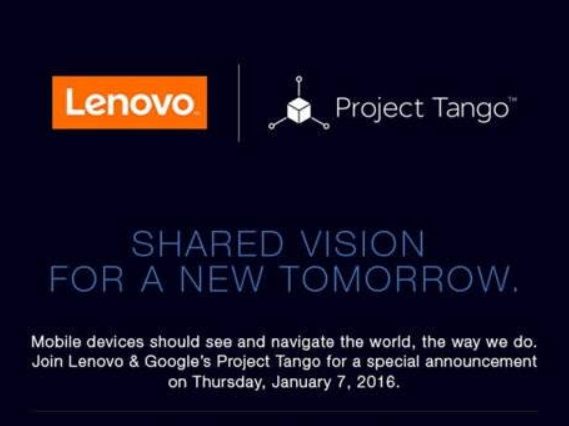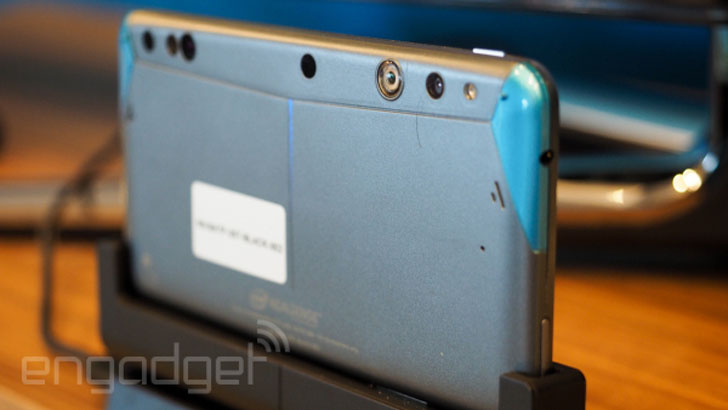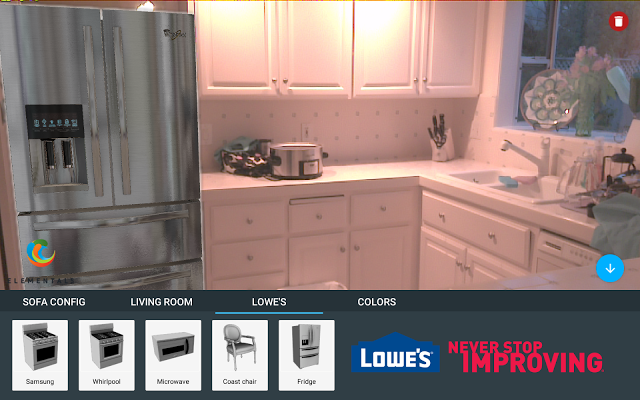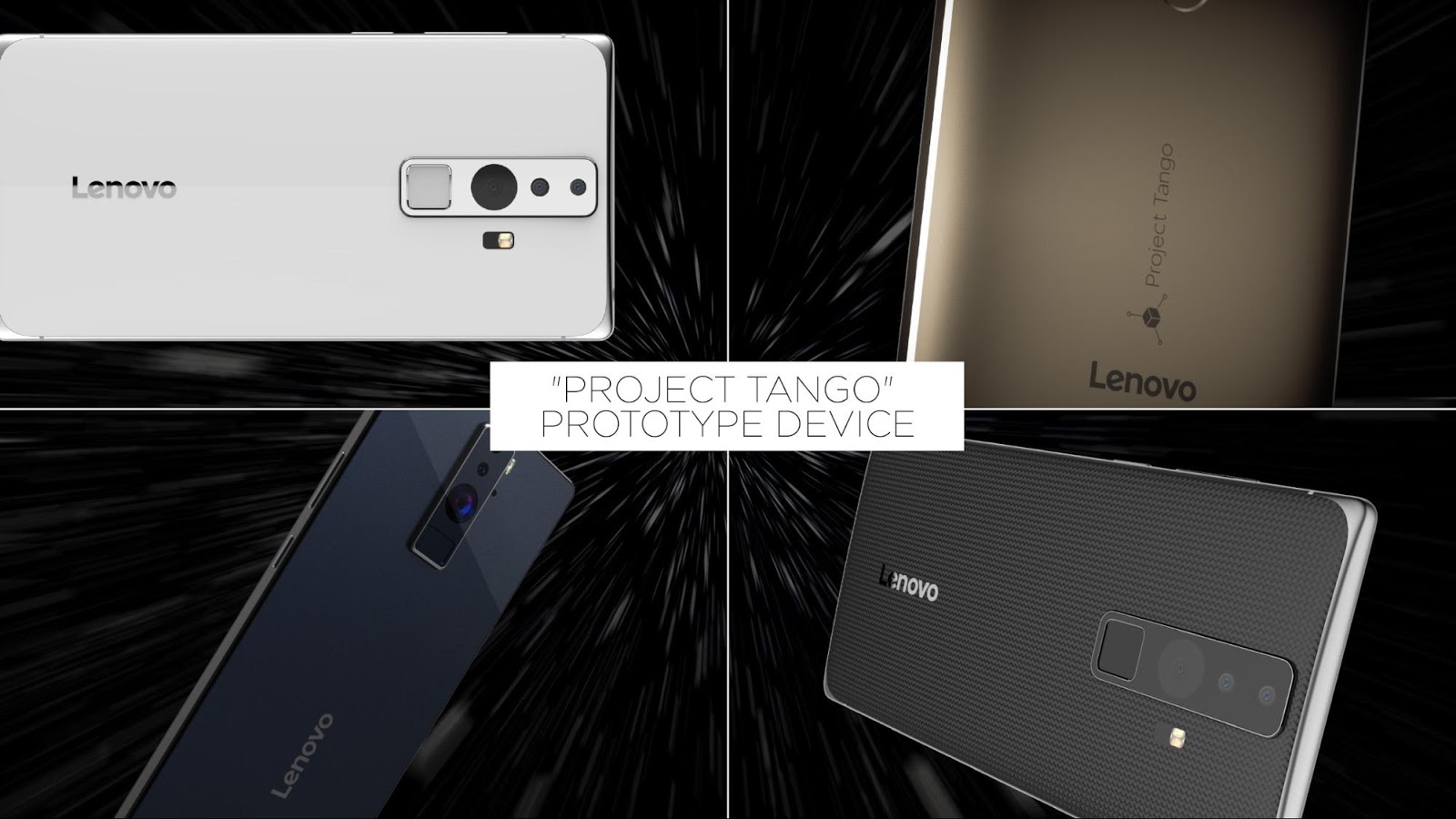If successful, Google’s Project Tango has the power to change just about everything. By putting a 3D camera into tablets and smartphones, ordinary consumers could, potentially, capture their daily world in 3D, sharing 3D selfies on dating sites and posting scans of their newborns on Facebook, all using a device that they would be carrying around anyway. And, after showing off a prototype of the Project Tango smartphone with Intel’s RealSense built-in, Google and Lenovo have teased that they will unveiling something big on Thursday.
A teaser was shared on Android Headlines that read, “Mobile devices should see and navigate the world, the way we do. Join Lenovo & Google’s Project Tango for a special announcement.” ComputerWorld further noted that a consumer-facing Project Tango product would probably be announced on Thursday. Given the fact that the Project Tango tablet has already been available to developers for around $500 and the Project Tango phablet prototype was recently shown off, I would guess that a smartphone or phablet is the device to be announced. In addition to the numerous RealSense devices, the Project Tango phablet would pair nicely with Lenovo’s new monitor, notebook, and tablet with RealSense built-in, all announced this year at CES.
Project Tango, which we’ve been following since it was publicly revealed a year or so ago, comes out of Google’s Advanced Technology And Projects (ATAP) group. Developed by former Kinect lead Johnny Lee, the platform uses an infrared emitter and infrared camera to triangulate the distance of objects from the user’s Tango device and mapping them in 3D. The phone’s other sensors, such as its accelerometer and gyrscope, are able to determine what object the user is looking at and what it looks like. Altogether, the goal is to allow devices to capture the world in 3D for applications such as 3D scanning, environment mapping, and augmented reality.
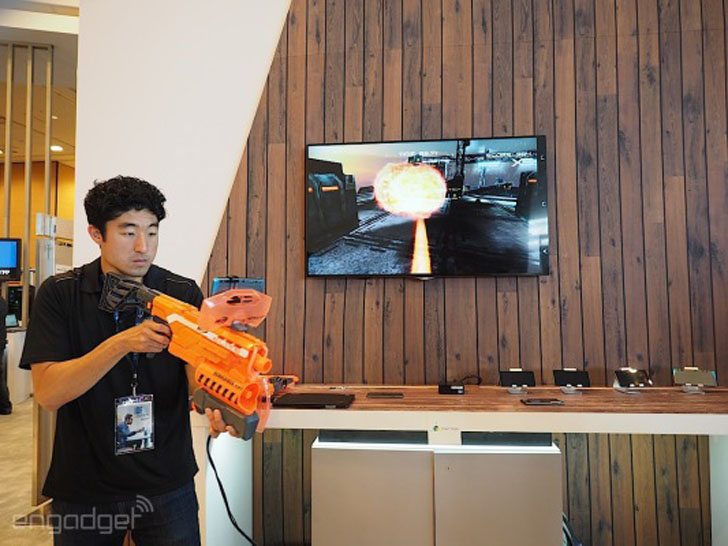
The news of the announcement reinforces something I told the audiences in Taiwan in December: 2016 will be the year that the mixed reality ecosystem really starts to coalesce. As Oculus opens up pre-orders for the Rift tomorrow, giving free consumer versions to Kickstarter backers, and Microsoft preps to ship the Hololens, it’s clear that 3D scanning, VR/AR, haptic devices, and 3D printing are starting to connect. Though it’s impact may not be felt immediately, we are building towards a future where we will be able to transfer objects to and from the digital world with ease. Of course, technology is clunky and this is only the beginning, so expect a lot of glitch art.
Update 1/7/2015: This afternoon, at CES, Google finally gave the world the Project Tango update everyone was looking for. After Intel subtly slipped news that their RealSense Smartphone Developer’s Kit was available for pre-order at $399, Twitter lit up with pics of the device that would use the Project Tango platform. But, at their keynote today, Google and Lenovo dove in, unveiling prototypes for the first Project Tango consumer device.
At the event, Project Tango product head Johnny Lee used the device to measure the space for home decor purposes, before bringing virtual furniture by Elemental into the room. Google also teamed up with Lowes, who has a library of home decor products, that gave Lee the ability to place virtual appliances around the CES space.
Things then got cute when he brought a virtual kitty cat onto the scene that, because of the depth sensing built into Tango, knew where he was in the room and actually seemed like as though it was in the space with him. Finally, he introduced a two-player Jenga game. This is all made possible with the Constructor algorithm running behind the scenes that translates raw data collected by the device’s sensors into useful information.
Because all of this was developed with the Developer’s Kit tablet, the real news was announced by a representative from Lenovo. For the past year, the company has been working with Google to create a “super device” that could actually be used by consumers. In other words: a smartphone. Running on a Qualcomm® Snapdragon™ processor, the Project Tango phone has an RGB camera, fish eye lens, and depth sensor, which they reoriented on the back of the phone. They’re still focus testing the final design with consumers, but in the photo below, you’ll get a small glimpse of the prototypes showed off on stage.
What’s most exciting, on top of all of this, is that this phone will be available this year. The plan is for a summer launch, with the Tango smartphone being sold worldwide for under $500, an impressive price point for the next generation of smartphones.
And, while there are already a number of apps already developed for the platform, there will be plenty more to come. Lee posted a blog on the Google Developer’s Forum inviting folks to create apps for the device. They can submit their apps here until February 15th for a chance to win funding and have their app featured on the upcoming smartphone. Of course, they’ll need the Project Tango tablet and will need to read about the App Incubator here for more details.
Digi-Capital has said that augmented reality will be a $120 billion industry by 2020 and, with Google, Microsoft, HP, Intel, and more already launching products for the space, one wonders where Apple is in all of this. After having poached a member from Microsoft’s HoloLens team and acquiring Metaio [Correction 1/11/2015: this article originally stated that Apple acquired Meta, another AR startup], they may just be ready to unleash their own 3D sensing smartphone on the world this year, as well. Who knows, maybe they’ll buy up Occipital to throw a 3D sensor onto the next iPhone, seeing as how they’re already pretty handy with iOS and 3D sensing.
Either way, the mixed reality ecosystem is officially here. In no time, we’ll be capturing 3D data from the physical world, transferring it to the digital world, where we’ll be transforming that data with haptic devices, before 3D printing it in the physical world. As if life wasn’t absurd enough as it is!


